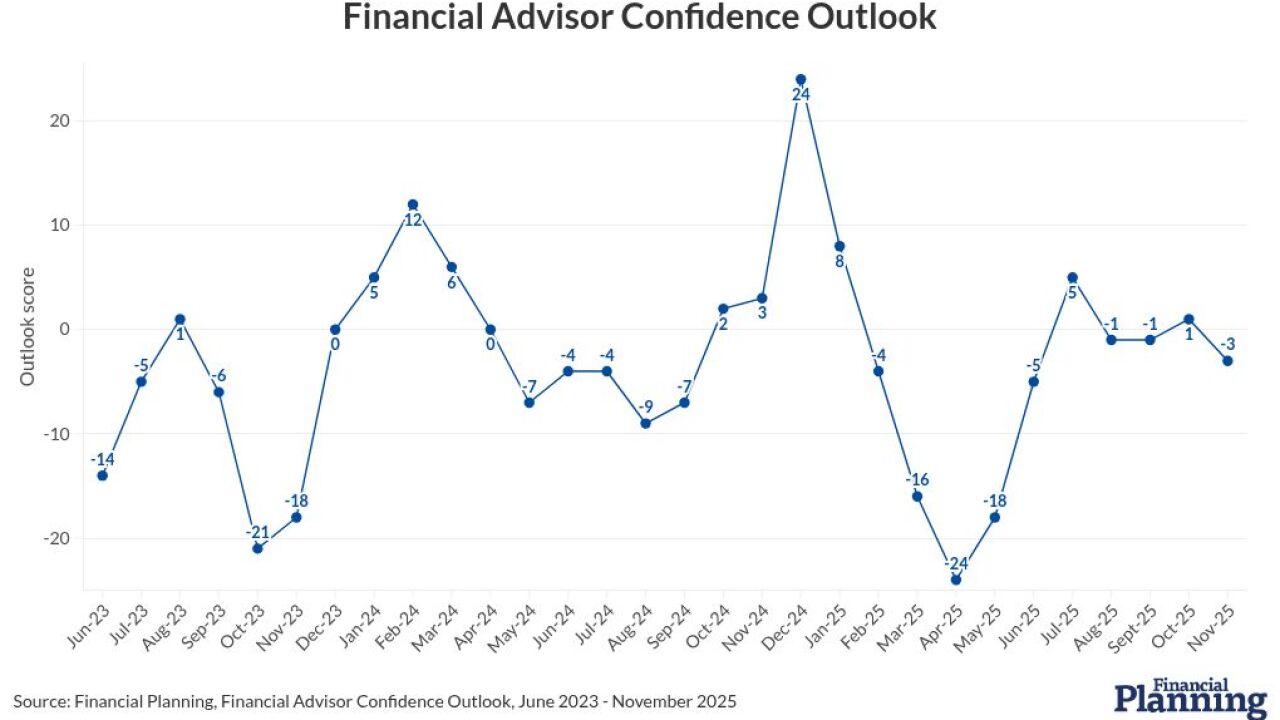As exchange-traded funds continue to grow in scope and popularity, investment experts warn that some products, such as leveraged and inverse ETFs, may be too dangerous for all but the most experienced hands.
"People get lazy and they think an ETF is an ETF," said Paul Schatz, president and CEO of the Woodbridge, Conn.-based registered investment advisor Heritage Capital LLC. "There are inherent problems with every product, and some products have way too much firepower for the average person to use."
Also, ETFs operate in a regulatory gray zone. While the Securities and Exchange Commission considers equity ETFs to fall under the Investment Company Act of 1940, there is no such explicit provision for them and the SEC must issue an exemptive order for each ETF proposal. Commodity-based ETFs are regulated by the Commodity Futures Trading Commission, but the SEC also oversees them and is still required to issue a "no-action" letter for each one.
The SEC is considering a proposal that would allow ETFs to begin operating without having to wait for SEC approval, said Cary Stier, managing partner of U.S. asset management services at Deloitte & Touche. He said the proposal would eliminate unnecessary regulatory burdens and facilitate greater competition and innovation among ETFs.
While it often takes a little extra time to get approval, ETFs can already do things most mutual funds only dream of, such as trade throughout the day on an exchange instead of at the day's closing price and use leveraged and inverse trading techniques in creative new ways that can have exciting and unpredictable outcomes.
Officials at the Financial Industry Regulatory Authority (FINRA) and SEC are looking at ways to better regulate and oversee these products. In August, the two agencies put out a joint release alerting investors to the dangers of leveraged ETFs (which seek to deliver multiples of daily performance on their index or benchmark), inverse ETFs (which allow investors to hedge downward-moving markets) and leveraged inverse ETFs (which seek a return that is a multiple of the inverse performance of the underlying index).
"The best form of investor protection is to clearly understand leveraged or inverse ETFs before investing in them," the SEC/FINRA investor alert said. "No matter how you initially hear about them, it's important to read the prospectus, which provides detailed information related to the ETFs' investment objectives, principal investment strategies, risks and costs."
They Put Warnings On Cigarettes, Too
These products already have big, fat warning labels all over them, but that doesn't stop inexperienced investors from seeking them out.
"If you look at the prospectus, it says these are supposed to reflect 'daily' performance," said Kathleen Moriarty, a partner at the law firm Katten Muchin & Rosenman. "Some people don't understand that these investments are changing every day" and shouldn't be held onto.
Leveraged and inverse ETFs use a range of investment strategies to accomplish their objectives, including swaps, futures contracts and other derivative instruments. They are meant to perform for a specific time, such as one day, and the mathematics of them don't support the typical buy-and-hold strategy, she said.
"I often feel like I'm talking to a blank wall" when explaining compounding to clients, she said. "Advisers should encourage potential investors to at least read the summary prospectus on these products so they understand exactly what they're investing in."
Some investment advisers say they hate leveraged ETFs and refuse to use them because of the confusing and counter-intuitive way they use compounding. Leveraged and inverse ETFs are designed to be traded daily, not held for several days or longer. When held for several days, weeks or months, double and triple inverse or leveraged ETFs can plummet into a vortex of losses that bares no resemblance to the underlying index.
While they may be complicated, it doesn't necessarily mean leveraged and inverse ETFs are bad; they just need to be used carefully by experienced investors.
"I don't think any investor who is working with an adviser sits down and reads prospectuses," Schatz said. "That's why they hire us."
"Investors rely on us as advisers to read through these and make sure they're suitable," added Paul Simon, chief investment officer at the Birmingham, Mich.-based Tactical Allocation Group. "Even prescription drugs can be bad for you when they're misused."
Simon said leveraged and inverse ETFs have a very limited, specialized use, and are intended for investors who are trying to hedge risk in their portfolios.
"Leveraged ETFs are inherently going to be more volatile," he said. "Last year's market was like throwing gas on a fire. These are really trading vehicles and are not meant to be bought and held. There's a big difference between speculating and investing."
Schatz said he was initially concerned about the liquidity of leveraged ETFs, but realized that ETFs are as liquid as their underlying index, and most ETFs are immensely liquid. While he said he does not personally use them, these products are successfully used by brokers at wirehouses, independent financial advisers, hedge funds and individuals who day trade.
"They are fine so long as you recognize the shortfalls of the vehicle you're using," he said. "You can trade with a 3x [triple leveraged] financial sector ETF, but financials are already volatile with just 1x. That's an awful lot of gunpowder to play with."
The ETF Universe
ETFs come in a wide range of shapes and sizes, with the most popular being U.S. equity ETFs. There are also global international equity ETFs, fixed income ETFs, commodity-based ETFs, real estate ETFs and currency ETFs. Increasingly, some are actively managed.
While there were 785 U.S.-domiciled ETFs as of the end of September, three ETF providers - Barclays Global Investors, State Street Global Advisors and Vanguard - account for 82% of the nearly $700 billion in total ETF assets, according to the National Stock Exchange.
Investors are drawn to ETFs for their flexibility, diversification and lower fees than mutual funds, said Cary Stier, managing partner of U.S. asset management services at Deloitte & Touche. Generally, ETFs are more tax efficient than open-ended mutual funds due to the way they redeem investors in-kind, instead of selling portfolio securities to fund shareholder redemptions, he said.
(c) 2009 Money Management Executive and SourceMedia, Inc. All Rights Reserved.
http://www.mmexecutive.com http://www.sourcemedia.com/





